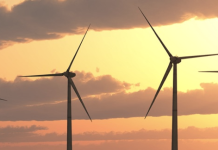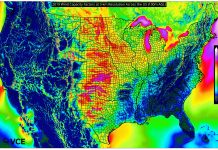The Global Wind Energy Council launched its flagship publication the Global Wind Report: Annual Market update today in Istanbul. The report details wind power’s remarkable growth in 2014, as well as updating GWEC’s rolling 5 year market projections, which show continued growth for the rest of the decade.
“Wind power’s growth is increasingly driven by its competitive pricing, as well as because it enhances energy security, price stability and (especially in China) through the need to address the choking smog that is increasingly making major urban areas in the developing world unlivable,” said Steve Sawyer, GWEC Secretary General.
 “The need for clean, sustainable indigenous power sources to fuel economic growth throughout Africa, Asia and Latin America is increasingly being met through wind power, and this will continue for the foreseeable future.”
“The need for clean, sustainable indigenous power sources to fuel economic growth throughout Africa, Asia and Latin America is increasingly being met through wind power, and this will continue for the foreseeable future.”
Looking ahead, GWEC expects the 2015 market to top 50 GW again in 2015, and reach 60 GW per year by 2018. Growth will continue to be led by China, which seems on track to meet its 200 GW well ahead of the government’s target of 2020; and the Indian market is expected to grow substantially in the years ahead. Latin America is becoming a strong regional market, led by Brazil, but with Mexico catching up quickly.
Africa installed nearly 1 GW in 2014 for the first time, and we expect it to pass that mark in 2015 and not look back. Led by South Africa, Egypt and Morocco, we look for a number of new markets to emerge in the coming years which will make Africa the fastest growing regional market, at least in percentage terms, in the coming years.
Europe is expected to remain relatively stable, and North America is the most difficult market to predict as policy vacuums loom in both the US and Canada in 2016 or thereafter.
“Looking ahead to the UN climate summit in Paris at the end of the year, we call on governments to wake up to the renewable energy revolution in the power sector, and set ambitious targets to reduce greenhouse gas emissions,” concluded Sawyer.
— Source: Global Wind Energy Council



























